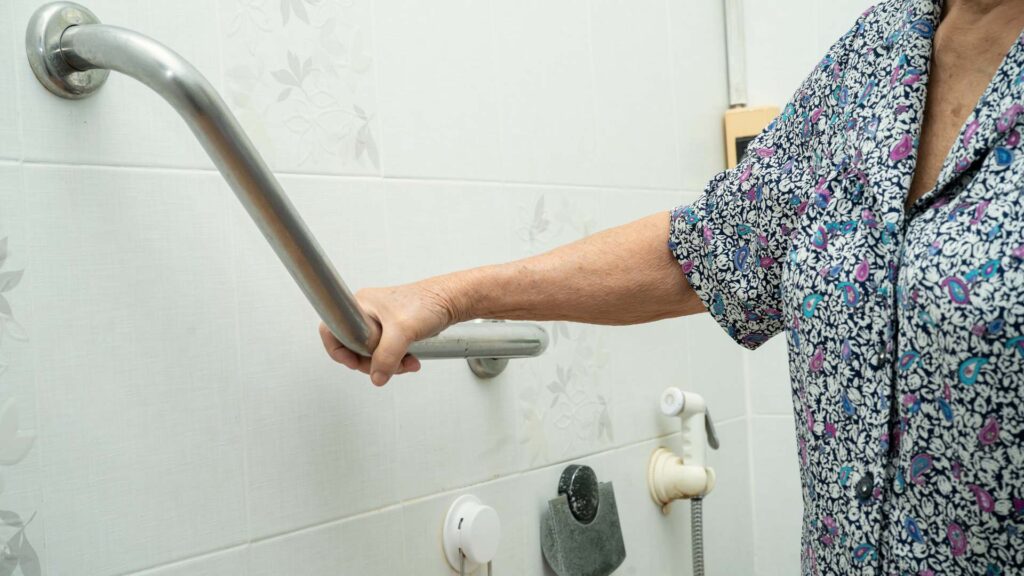When it comes to creating a safe and accessible bathroom, grab bars are an essential component of ADA-compliant designs. These seemingly simple fixtures play a vital role in ensuring the safety and independence of individuals with mobility challenges, particularly in spaces that can be hazardous, like bathrooms. In this post, we will explore the importance of grab bars in ADA bathroom designs and why they are a must-have in any accessible bathroom remodel.
Why Grab Bars Matter
Bathrooms are one of the most common places for falls, especially among seniors and people with disabilities. Wet surfaces, tight spaces, and the need to move from sitting to standing positions make bathrooms particularly risky. Grab bars provide the support needed to navigate these challenges, reducing the risk of falls and injuries.
Grab bars are not just for the elderly. They are beneficial for anyone who might struggle with balance, strength, or coordination. For individuals recovering from surgery or living with chronic conditions that affect mobility, grab bars offer a crucial aid that can make daily tasks much more manageable.
ADA Guidelines for Grab Bars
The Americans with Disabilities Act (ADA) provides specific guidelines for the installation of grab bars to ensure they are effective and accessible. According to ADA standards, grab bars must be installed in specific locations, such as beside toilets and in showers or bathtubs. These bars must be mounted at a height between 33 to 36 inches from the floor to be accessible for most individuals.
In addition to location and height, the ADA also specifies the diameter of the grab bars, recommending a thickness between 1.25 to 1.5 inches. This size is comfortable for most people to grip securely. Furthermore, the bars should be able to support a minimum of 250 pounds of force, ensuring they can provide adequate support in the event of a slip or fall.
Types of Grab Bars
There are several types of grab bars available, each designed to meet different needs and preferences. Here are some common options:
- Straight Grab Bars: These are the most traditional type, available in various lengths and finishes. They are typically installed horizontally or vertically along walls in bathrooms.
- Angled Grab Bars: Angled bars provide more flexibility in positioning and can be particularly helpful for individuals who need support in more than one direction.
- Fold-Down Grab Bars: These bars can be folded against the wall when not in use, making them a great option for smaller bathrooms where space is limited.
- Wave and Designer Grab Bars: For those who want to combine safety with style, wave-shaped and designer grab bars offer a more aesthetically pleasing alternative to traditional bars without sacrificing functionality.
Benefits of Installing Grab Bars
The installation of grab bars in an ADA bathroom remodel offers numerous benefits:
- Enhanced Safety: The primary benefit of grab bars is the increased safety they provide. By offering a stable surface to hold onto, grab bars can significantly reduce the risk of falls, especially in wet areas like showers and bathtubs.
- Increased Independence: Grab bars empower individuals to perform daily tasks, such as getting in and out of the shower, with greater independence. This is particularly important for those who wish to age in place and maintain their autonomy.
- Peace of Mind: Knowing that a bathroom is equipped with grab bars can provide peace of mind for both the individual using the bathroom and their loved ones. The added safety feature helps alleviate concerns about potential accidents.
- Versatility: Grab bars can be installed in various locations and come in a range of styles to match any bathroom decor. This makes it easy to incorporate them into any bathroom design without compromising on aesthetics.
Choosing the Right Grab Bars
When selecting grab bars for your ADA bathroom remodel, it’s essential to consider both function and form. While safety is the top priority, modern grab bars come in a wide range of styles and finishes, allowing you to choose options that complement your bathroom’s design.
Stainless steel is a popular choice for its durability and sleek appearance, but there are also grab bars available in brass, bronze, and other finishes to match different decor styles. Additionally, some grab bars come with textured grips or anti-slip surfaces to provide extra security.
Professional Installation Matters
While grab bars may seem like a simple addition, proper installation is crucial to ensure they provide the intended safety benefits. It’s important to work with professionals like Handi Bath Remodeling, who are experienced in ADA bathroom designs. They understand the specific requirements and best practices for installing grab bars and can ensure that they are securely mounted and positioned correctly.
Conclusion
Grab bars are a fundamental element of any ADA-compliant bathroom design, offering essential support and enhancing safety for individuals with mobility challenges. Whether you’re planning a bathroom remodel for yourself or a loved one, incorporating grab bars is a critical step in creating a safe, accessible, and functional space. By working with experts like Handi Bath Remodeling, you can ensure that your bathroom meets all ADA standards while also reflecting your personal style and needs.


